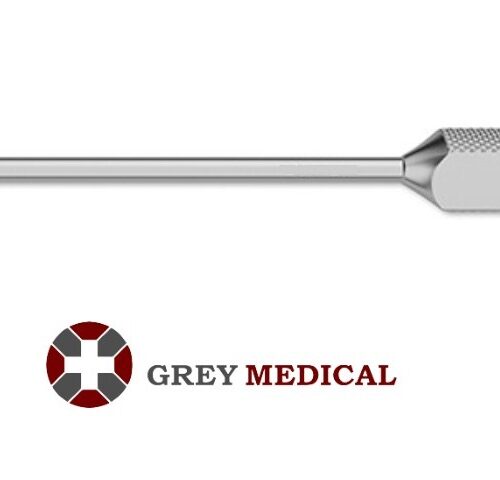Heparin Needles: Essential Tools for Safe Anticoagulant Administration
Heparin Needles: Essential Tools for Safe Anticoagulant Administration
Blog Article
Heparin needles are specialized medical instruments designed for the administration of heparin, a widely used anticoagulant medication that prevents blood clots. Heparin is often prescribed for patients with conditions such as deep vein thrombosis (DVT), pulmonary embolism, and atrial fibrillation, or for those undergoing surgeries where the risk of blood clots is high. The proper choice and use of heparin needles are critical to ensure safe and effective drug delivery while minimizing patient discomfort. This blog explores the design, specifications, uses, and significance of heparin needles in medical practice.

What Are Heparin Needles?
Heparin needles are typically small-gauge, thin needles designed for subcutaneous or intravenous injection of heparin. These needles are attached to syringes pre-filled with heparin or can be connected to a separate syringe filled with the drug. Their primary purpose is to deliver heparin into the body efficiently and with minimal tissue trauma.
The size and length of the needle are specifically chosen to ensure accurate drug delivery, especially for subcutaneous administration, which is the most common method for heparin injection.
Specifications of Heparin Needles
- Gauge (Thickness of the Needle)
- The gauge of a needle refers to its thickness. For heparin administration, smaller gauges are preferred to minimize discomfort and tissue damage.
- Common needle gauges for heparin injections range from 25G to 30G, with 27G being a popular choice for subcutaneous injections.
- Length
- The length of the needle varies based on the type of injection (subcutaneous or intravenous).
- For subcutaneous injections, the length typically ranges from 3/8 inch (9 mm) to 5/8 inch (16 mm).
- For intravenous administration, longer needles (1 inch or more) may be used.
- Needle Tip Design
- Heparin needles have beveled tips designed for easy penetration with minimal discomfort.
- The fine design ensures precise drug delivery and reduces the risk of bruising or tissue trauma.
- Sterility and Material
- Made from stainless steel, heparin needles are sterile and often disposable to minimize the risk of infection.
Uses of Heparin Needles
Heparin needles are specifically used for the administration of heparin in the following ways:
- Subcutaneous Injections
- Heparin is most commonly administered subcutaneously to ensure slow and consistent absorption into the bloodstream.
- Common injection sites include the abdomen, upper thigh, or arm. Rotating injection sites reduces the risk of irritation or tissue damage.
- Intravenous Administration
- In emergency situations, such as acute blood clots or during surgeries, heparin may be administered intravenously using a heparin needle connected to a syringe or infusion system.
- Flushing Intravenous Lines
- Heparin needles may also be used for flushing intravenous lines or catheters to prevent blood clot formation within the line.
- Low Molecular Weight Heparin (LMWH)
- Pre-filled syringes with heparin needles are commonly used for administering low molecular weight heparin (e.g., enoxaparin), which requires precise dosing.
Importance of Proper Needle Selection for Heparin Administration
Choosing the correct needle size and length is crucial for ensuring the safe and effective delivery of heparin. Factors to consider include:
- Minimizing Patient Discomfort: Smaller-gauge needles reduce pain during injection, making the process more comfortable for the patient.
- Preventing Complications: Proper needle length ensures that the medication is delivered to the correct tissue layer (subcutaneous fat or vein), reducing the risk of complications like hematoma formation or incorrect absorption.
- Reducing Tissue Damage: Fine, beveled needles minimize bruising and irritation at the injection site.
Technique for Using Heparin Needles
- Subcutaneous Injection:
- Select a site with a layer of fat, such as the abdomen.
- Clean the injection site with an alcohol swab.
- Pinch the skin gently to create a fold.
- Insert the needle at a 45° to 90° angle, depending on the needle length and patient’s body type.
- Inject the medication slowly and remove the needle gently.
- Intravenous Injection:
- Locate a suitable vein, often in the arm or hand.
- Clean the site and use the needle to access the vein directly or through an intravenous line.
- Administer heparin according to the prescribed dosage.
Safety Precautions When Using Heparin Needles
- Avoid Bruising: Do not rub the injection site after administering heparin, as this can cause bruising or hematomas.
- Rotate Injection Sites: Change the injection site regularly to avoid irritation or tissue damage.
- Proper Disposal: Always dispose of heparin needles in a sharps container to prevent accidental needle sticks or injuries.
- Sterility: Use only sterile, single-use needles to prevent infections.
Advancements in Heparin Needle Design
Modern heparin needles are designed to enhance patient comfort and safety:
- Pre-Filled Syringes: Heparin needles are often attached to pre-filled syringes for easy and accurate dosing.
- Ultra-Thin Needles: Advances in needle manufacturing have introduced ultra-thin needles that reduce pain and tissue trauma.
- Safety Needles: Many heparin needles now feature safety mechanisms to prevent accidental needle sticks.
Conclusion
Heparin needles are essential medical tools for the safe and effective administration of anticoagulants. Their precise design, small gauge, and fine tips ensure minimal discomfort and maximum efficacy during injections. Proper needle selection and technique are critical for preventing complications and ensuring patient safety.
As advancements in medical devices continue, heparin needles have become increasingly patient-friendly, offering improved comfort and safety features. Whether used for subcutaneous or intravenous administration, these needles play a vital role in preventing blood clots and ensuring better outcomes for patients at risk of thrombotic events. Report this page